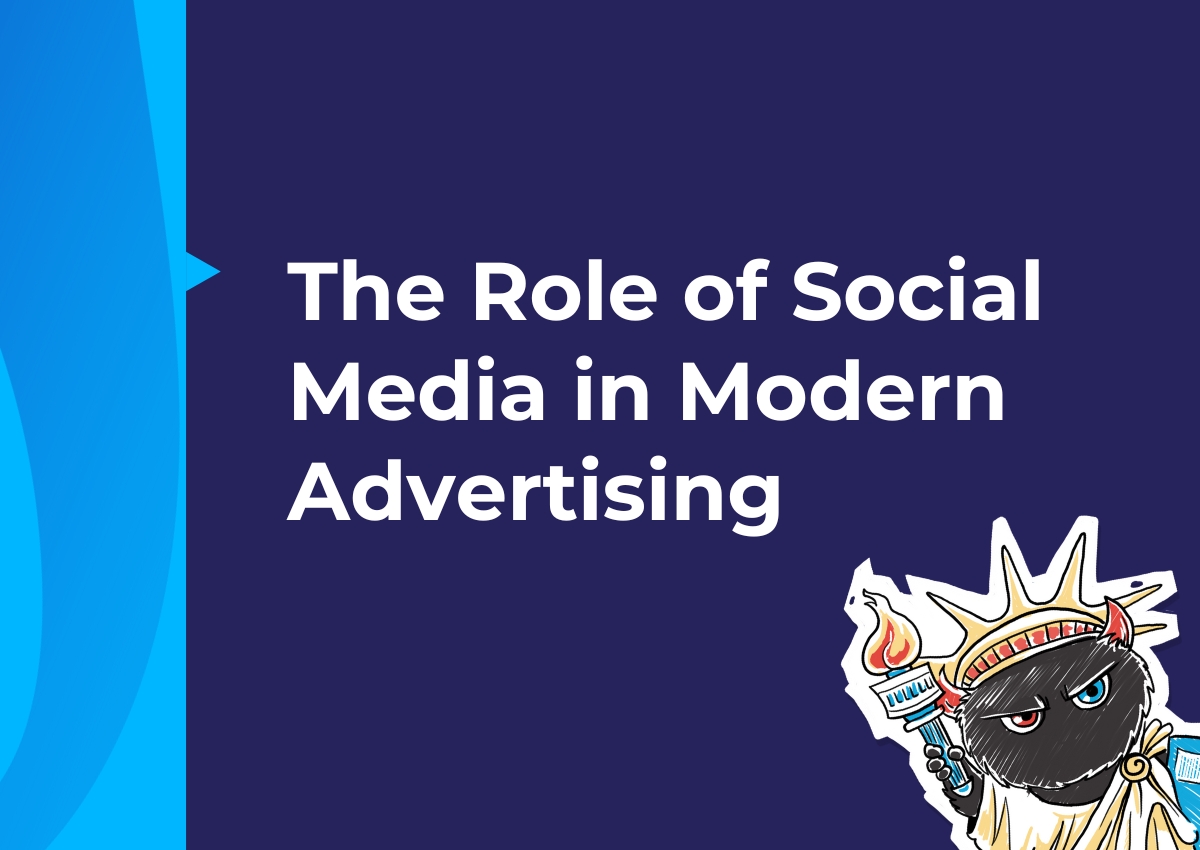 https://www.omahamediagroup.com/images/uploads/monster_gallery/Omaha-Media-Group-Black.jpg
nora
https://www.omahamediagroup.com/images/uploads/monster_gallery/Omaha-Media-Group-Black.jpg
nora
The Role of Social Media in Modern Advertising

Social media has become a powerful tool in modern advertising. With billions of users across various platforms, it offers a vast audience that businesses can tap into. Social media allows us to reach potential customers where they spend a significant amount of their time, making it a crucial element in any advertising strategy.
One of the main advantages of social media advertising is its ability to target specific audiences. Unlike traditional advertising methods, social media platforms provide detailed user data that we can use to create targeted ads. This means we can tailor our messages to reach the right people at the right time, increasing the chances of engagement and conversion.
Creating engaging content is also key to successful social media campaigns. The nature of social media encourages interaction, so our ads need to be interesting and engaging to capture users' attention. By using visuals, videos, and good storytelling, we can create ads that stand out and resonate with our audience.
Finally, measuring the impact of social media ads is essential for refining and improving our strategy. Platforms offer various metrics and analytics tools that help us understand how our ads are performing. By analyzing this data, we can make informed decisions and optimize our campaigns for better results.
Understanding the Reach and Influence of Social Media
Social media platforms like Facebook, Instagram, Twitter, LinkedIn, and TikTok have billions of users combined. These platforms are integral to many people's daily lives, providing an enormous audience for advertisers. The reach of social media allows us to connect with potential customers who might never encounter our brand through traditional advertising methods.
The influence of social media goes beyond just numbers. Users trust recommendations from friends, influencers, and reviews they find on these platforms. Positive interactions and user-generated content can significantly boost our brand's credibility. Additionally, social media trends can quickly go viral, providing an opportunity for our brand to gain rapid exposure.
Understanding the demographic details of each platform can help us target our ads more effectively. For example, LinkedIn is more popular among professionals and B2B companies, while Instagram and TikTok are favored by younger audiences. By strategically choosing where to place our ads, we maximize the potential of reaching our intended audience.
Leveraging Social Media Platforms for Targeted Advertising
Targeted advertising on social media is one of its most powerful features. Platforms like Facebook and Instagram provide extensive data on user behavior, interests, and demographics. We can use this information to create highly targeted ads that reach users who are most likely to be interested in our products or services.
One method of targeted advertising is using customized audiences. By uploading a list of contacts, we can target ads specifically to those individuals. We can also create lookalike audiences, which are groups of people who have similar characteristics to our current customers, increasing the chances of reaching new potential customers.
Another effective approach is using retargeting ads. These are shown to users who have previously interacted with our website or social media profiles but have not taken desired actions, like making a purchase. Retargeting keeps our brand on their mind and encourages them to return and complete the action.
Choosing the right type of ad format is also crucial. Whether it's a carousel ad, video ad, or sponsored post, the format should match our campaign goals and resonate with our audience. By leveraging the targeting capabilities of social media platforms, we can create more effective ad campaigns that deliver better results.
Creating Engaging Content for Social Media Campaigns
Creating engaging content for social media campaigns involves understanding what captures your audience’s attention. The key is to combine creativity with strategic planning. Here are some effective strategies:
- Visual Content: Use eye-catching images, videos, and infographics. High-quality visuals stand out in crowded feeds and encourage users to pause and engage. Make sure your visuals are relevant and support your message.
- Storytelling: People connect with stories. Share customer testimonials, behind-the-scenes looks at your business, or narratives about how your product or service makes a difference. Authentic stories build trust and emotional connection.
- Interactive Content: Use polls, quizzes, and interactive posts to engage your audience. Interactive content encourages participation, making your followers feel involved and valued.
- Concise Messaging: Social media users prefer quick, digestible content. Use clear, concise language and get to the point quickly. Use bullet points or numbered lists to make information easy to scan.
- Hashtags and Trends: Use relevant hashtags to increase your content’s discoverability. Stay updated with trending topics and participate in conversations that align with your brand.
By creating content that is visually appealing, story-driven, interactive, and concise, we can engage our audience effectively. This engagement is crucial for successful social media campaigns.
Analyzing and Measuring the Impact of Social Media Ads
Analyzing and measuring the impact of social media ads allows us to understand what works and what doesn’t. This helps optimize future campaigns for better results. Here are key steps to analyze and measure ad performance:
- Set Clear Goals: Define what you want to achieve with your ads. Common goals include increasing brand awareness, driving traffic to your website, or boosting sales.
- Use Analytics Tools: Platforms like Facebook, Twitter, and Instagram offer built-in analytics tools. Use these tools to track metrics such as impressions, clicks, engagement rate, and conversions.
- Track Key Performance Indicators (KPIs): Focus on metrics that align with your goals. For brand awareness, track impressions and reach. For engagement, monitor likes, shares, comments, and overall engagement rate. For sales, track click-through rates (CTR) and conversion rates.
- A/B Testing: Experiment with different ad creatives, headlines, and targeting options. A/B testing helps determine what resonates best with your audience. Use the insights gained to refine your future ads.
- Adjust Your Strategy: Analyzing data is just the first step. Use insights gained to adjust your strategy. If certain types of content perform better, double down on those. If specific ads fail to meet expectations, analyze why and modify them accordingly.
By regularly analyzing and measuring ad performance, we can continuously improve our social media advertising efforts. This ensures we are reaching our goals and driving value for our business.
Final Thoughts
Creating a successful social media strategy requires a combination of understanding your audience, creating engaging content, and continuously analyzing performance. Each step, from crafting compelling narratives to tracking key metrics, plays a crucial role in driving engagement and achieving marketing goals.
A well-rounded approach ensures that our social media campaigns are not only impactful but also adaptable to changing trends and audience preferences. Continuous learning and improvement are key to staying ahead in the ever-evolving social media landscape.
At Monstrous Media Group, we specialize in developing tailored social media strategies that drive results. If you’re ready to enhance your social media presence and achieve your marketing objectives, contact Monstrous Media Group today and let us help you make your mark!
Hire the team to help you with your website, app, or other marketing needs.
We have a team of digital marketers who can help plan and bring to life all your digital marketing strategies. They can help with social media marketing, email marketing, and digital advertising!
CONTACT US

Comments